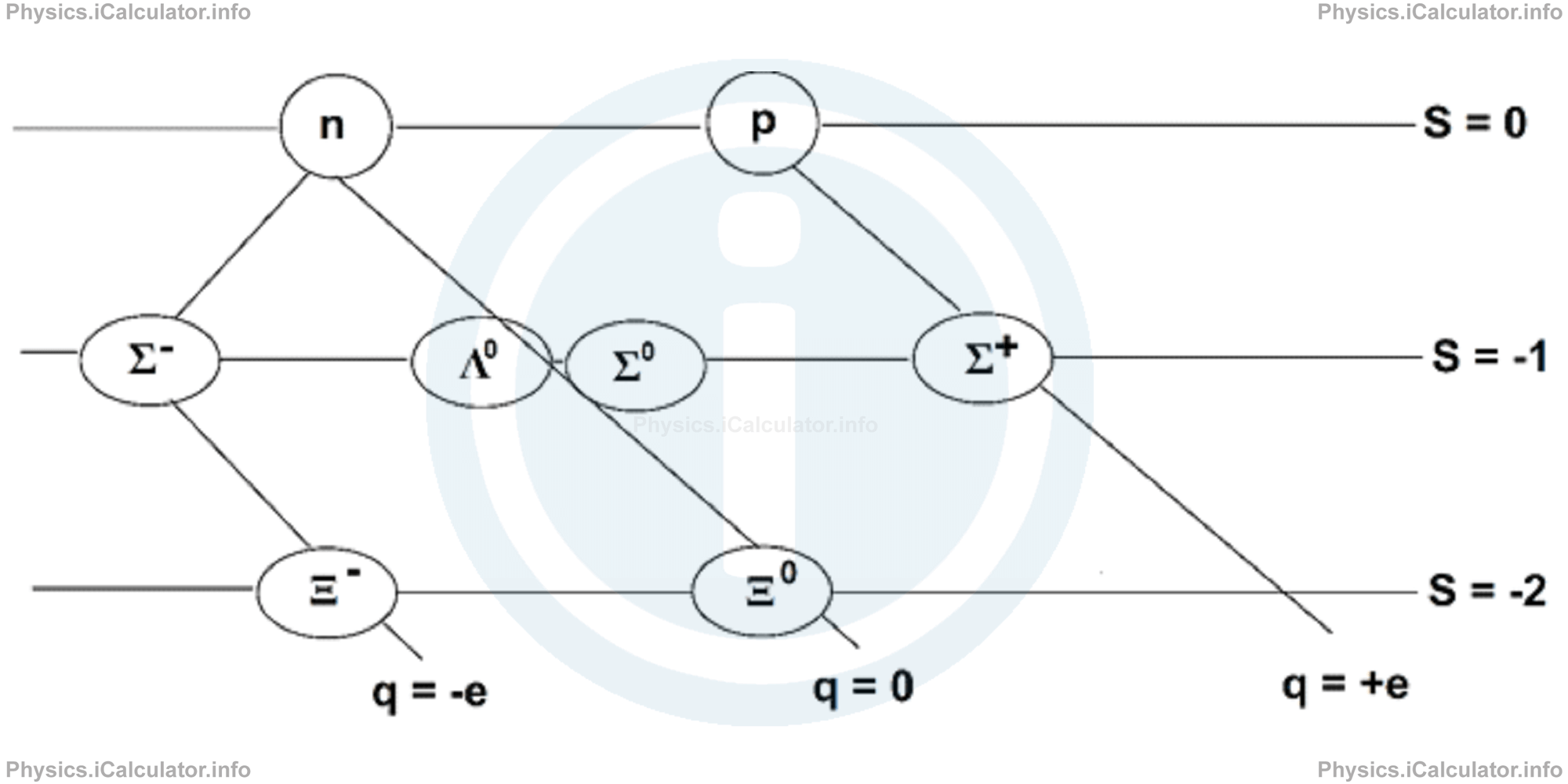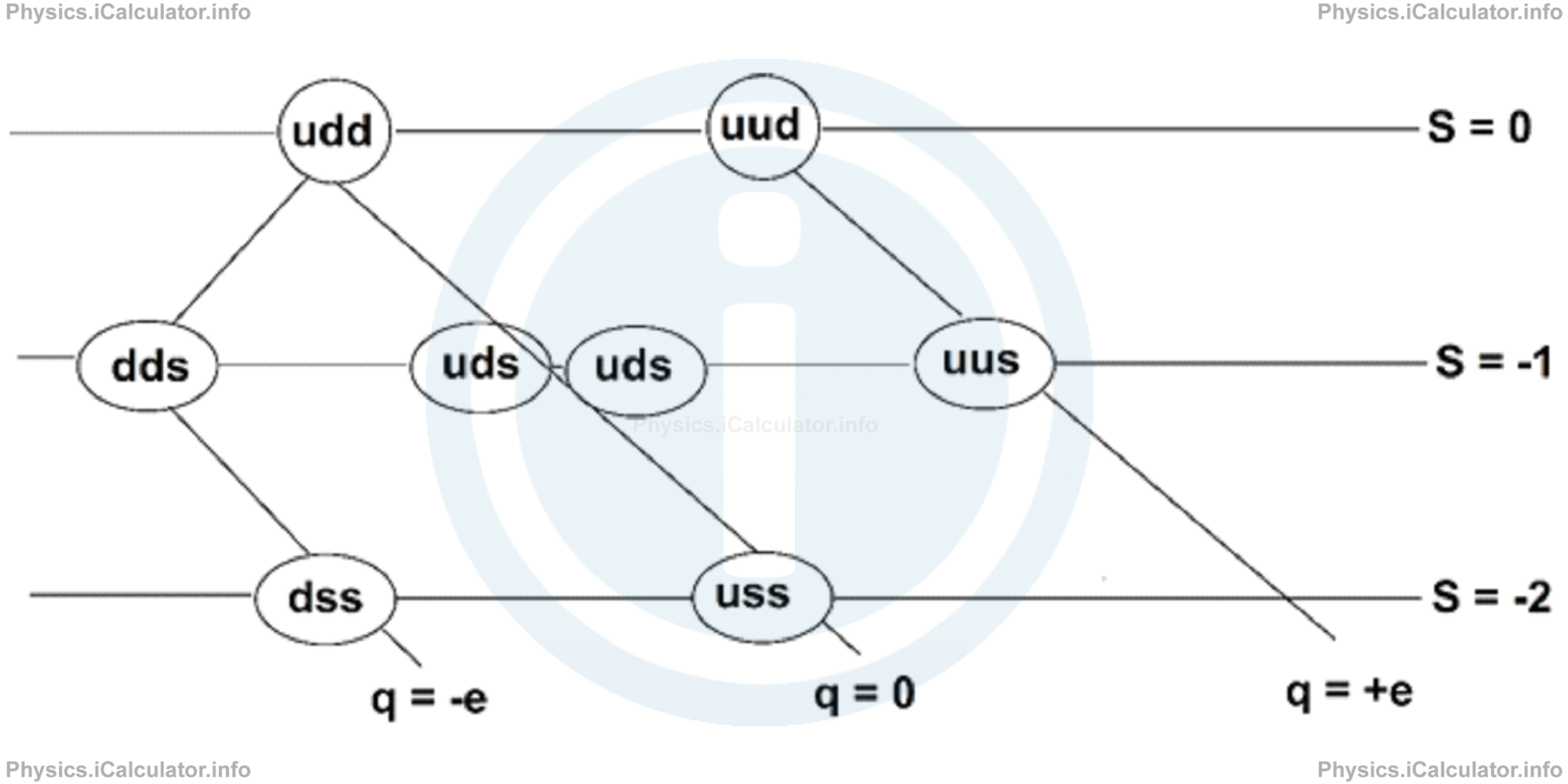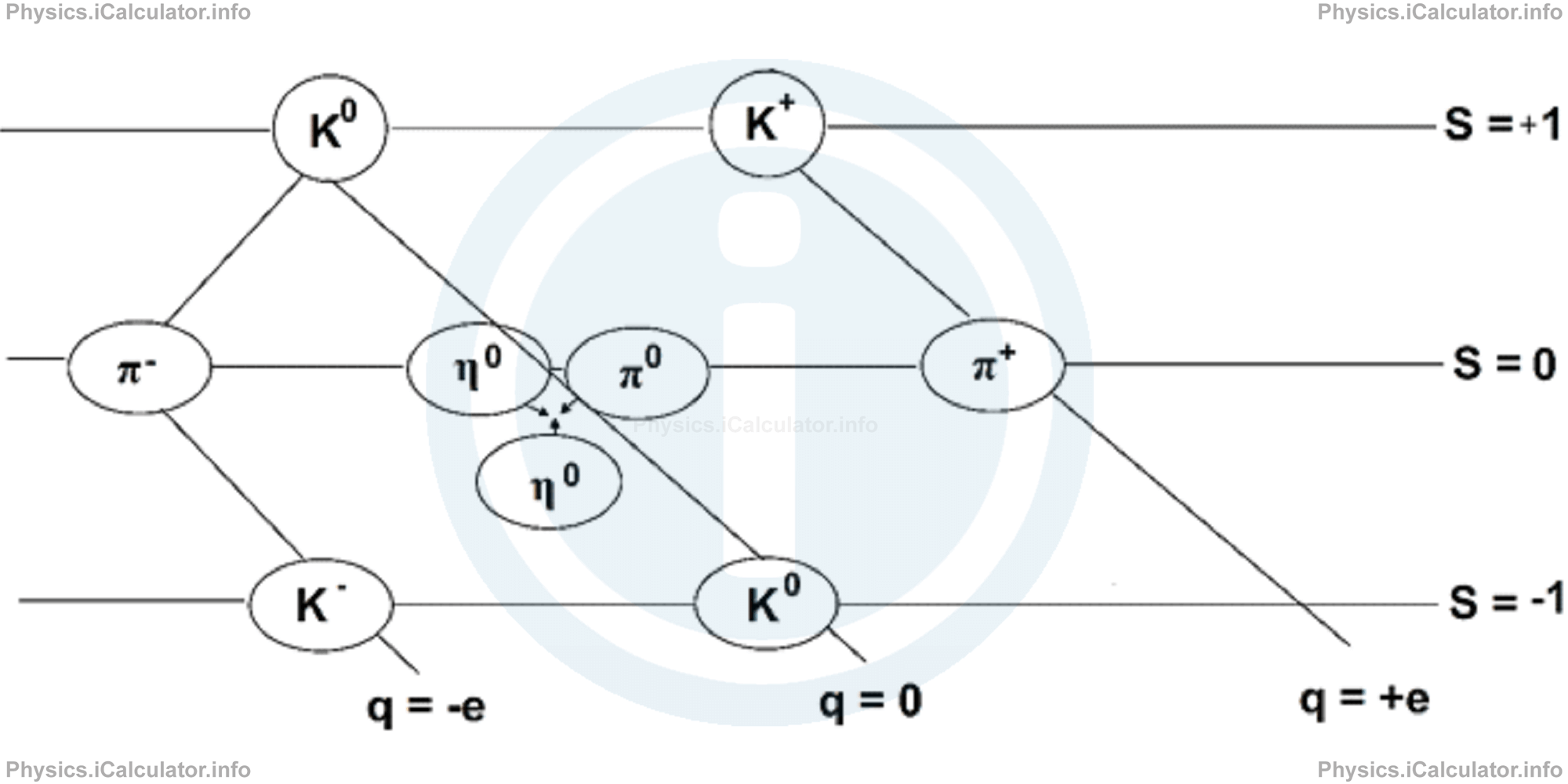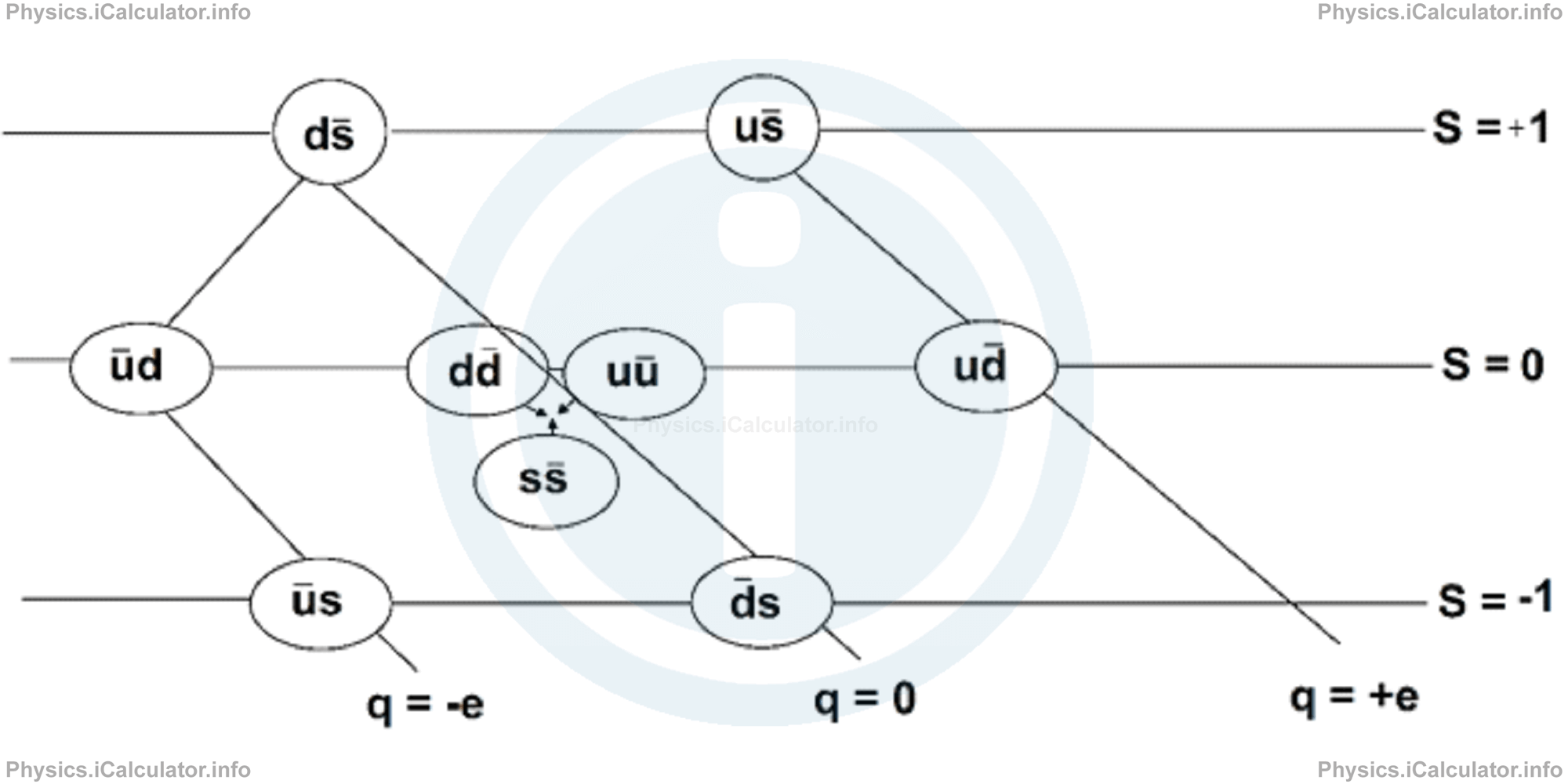Menu
Physics Lesson 21.3.5 - Symmetry
Please provide a rating, it takes seconds and helps us to keep this resource free for all to use
Welcome to our Physics lesson on Symmetry, this is the fifth lesson of our suite of physics lessons covering the topic of Classification of Elementary Particles. Quarks and Charm, you can find links to the other lessons within this tutorial and access additional physics learning resources below this lesson.
Symmetry
Symmetry is a very important property of elementary particles that has helped a lot in the progress made in this field of science in the sense that particles not discovered yet have been predicted just by looking the symmetry of the corresponding schemes. One of such schemes involves the eight bosons (8-vertices symmetry) having the value of baryon spin 1/2. They are: protons and neutrons, the family of single-strangeness particles (Λ0, Σ+ , Σ0 and Σ-) and that of double-strangeness particles (Ξ0 and Ξ-). For each particle, the values of electric charge q and strangeness S are shown. The first figure below shows the values of Q and S for half-spin baryons, giving thus the 8-particles symmetric model. The other figure shows the corresponding quarks composing these half-spin baryons. Thus, the quark composition of Λ0 and Σ0 is the same; Σ0 represents an excited state of Λ0 and it can split by emitting gamma radiation (photons).


Another symmetry used to describe how elementary particles are related to each other is the one shown in two following figures, where the values of electric charge q and strangeness S for 9 mesons that have a zero spin are given applying again the same symmetry as before. In this scheme, each particle is in the opposite vertex to its corresponding antiparticle while the three particles at centre of the figure are antiparticles of themselves. The next figure shows the quark composition of each particle involved.


You have reached the end of Physics lesson 21.3.5 Symmetry. There are 6 lessons in this physics tutorial covering Classification of Elementary Particles. Quarks and Charm, you can access all the lessons from this tutorial below.
More Classification of Elementary Particles. Quarks and Charm Lessons and Learning Resources
Whats next?
Enjoy the "Symmetry" physics lesson? People who liked the "Classification of Elementary Particles. Quarks and Charm lesson found the following resources useful:
- Symmetry Feedback. Helps other - Leave a rating for this symmetry (see below)
- Elementary Particles Physics tutorial: Classification of Elementary Particles. Quarks and Charm. Read the Classification of Elementary Particles. Quarks and Charm physics tutorial and build your physics knowledge of Elementary Particles
- Elementary Particles Revision Notes: Classification of Elementary Particles. Quarks and Charm. Print the notes so you can revise the key points covered in the physics tutorial for Classification of Elementary Particles. Quarks and Charm
- Elementary Particles Practice Questions: Classification of Elementary Particles. Quarks and Charm. Test and improve your knowledge of Classification of Elementary Particles. Quarks and Charm with example questins and answers
- Check your calculations for Elementary Particles questions with our excellent Elementary Particles calculators which contain full equations and calculations clearly displayed line by line. See the Elementary Particles Calculators by iCalculator™ below.
- Continuing learning elementary particles - read our next physics tutorial: Elementary Particles
Help others Learning Physics just like you
Please provide a rating, it takes seconds and helps us to keep this resource free for all to use
We hope you found this Physics lesson "Classification of Elementary Particles. Quarks and Charm" useful. If you did it would be great if you could spare the time to rate this physics lesson (simply click on the number of stars that match your assessment of this physics learning aide) and/or share on social media, this helps us identify popular tutorials and calculators and expand our free learning resources to support our users around the world have free access to expand their knowledge of physics and other disciplines.